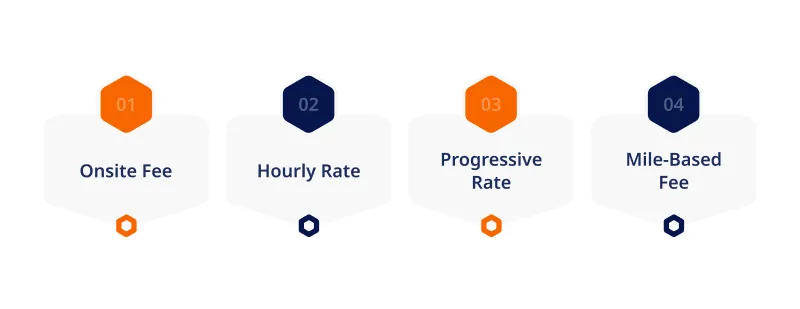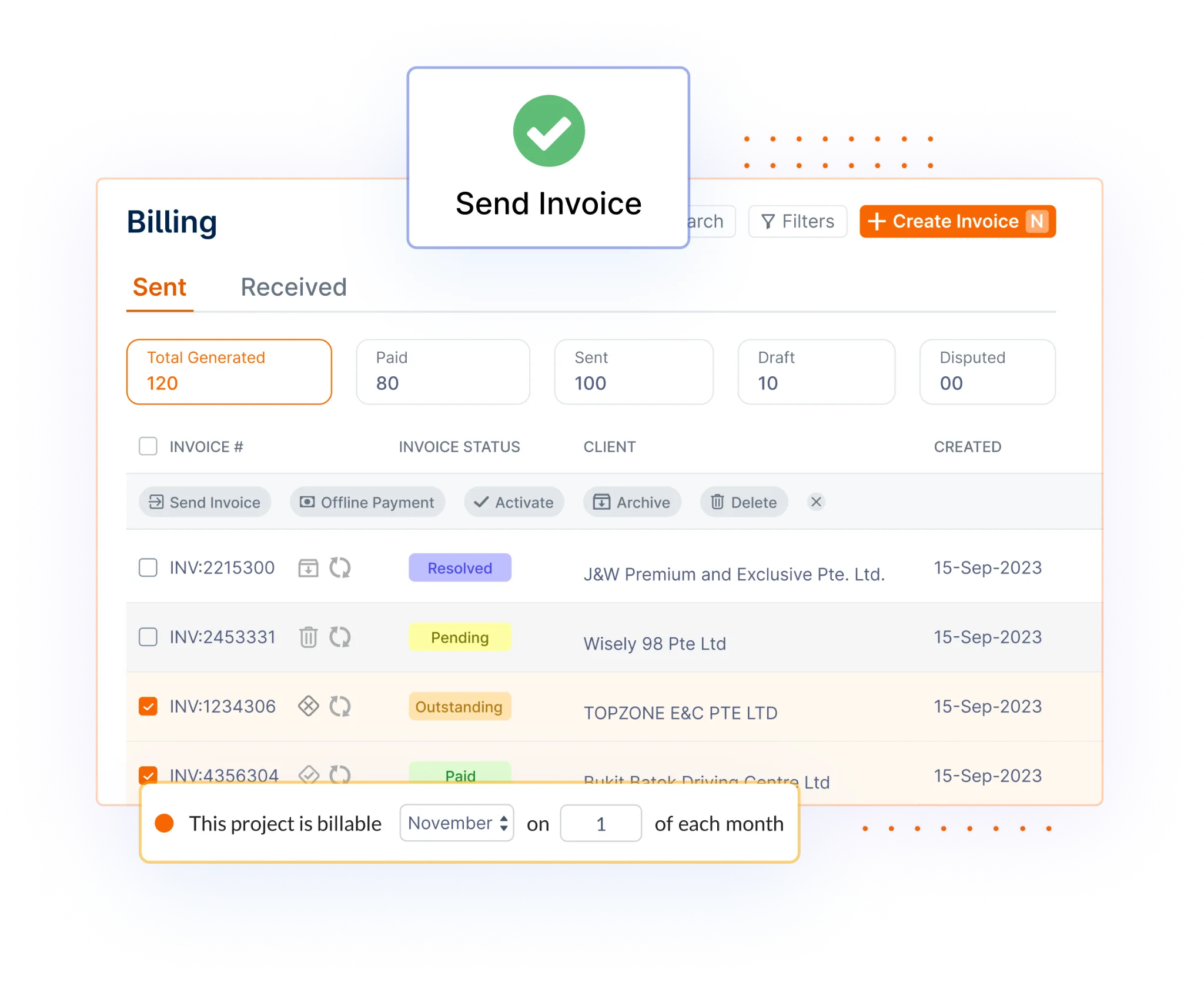Have you ever been stuck in traffic en route to a client meeting, wondering, “Should I be charging for this time?”
According to the Corporate Travel Index compiled by Business Travel News, a businessman on average spends $325 traveling per meeting.
For any small business, Travel Time is an important aspect and must be taken care of with utmost sincerity. Once you understand the true worth of your services, it will help you get paid for them more appropriately.
While you take steps to make a lot of your cost-bearing services easier for clients, it is also important to realize the worth of the money being spent on it.
Thus, in this blog post, we’ll discuss how much to charge clients for travel time, addressing the pain points that many professionals face.
As we explore industry standards, personalized approaches, and effective communication strategies, we’ll also introduce a game-changer in invoicing—Invoicera.
Key Factors For Calculating Travel Charges
A. Distance and Travel Duration
When figuring out how much to charge for your travel time, the distance you need to cover and the time it takes are fundamental factors.
Are you driving for a couple of hours, or is it just a short hop? The farther and longer the journey, the more your time is worth.
B. Mode of Transportation
Different modes of transportation come with varying costs and time commitments. If you’re flying, consider not just the ticket price but also the time spent getting to and from the airport, security checks, and potential delays.
On the other hand, if you’re driving, factor in gas costs and wear and tear on your vehicle.
C. Travel Expenses
It’s not just about your time; it’s about the out-of-pocket expenses too. Keep track of fuel costs, especially for longer drives. If your trip involves an overnight stay, factor in accommodation costs, and don’t forget meals. These expenses contribute to the overall value of your time spent on the road.
D. Time of Day and Traffic Considerations
The time you choose to travel can significantly impact your experience and, consequently, your charges. Rush hour traffic can turn a short trip into a lengthy ordeal, affecting your productivity and increasing your travel time.
Consider if traveling during off-peak hours or avoiding heavy traffic can make your journey more efficient.
Industry Standards And Benchmarks
A. Research on Typical Travel Time Charges in Various Industries:
Understanding how different industries handle travel time charges is like having a roadmap for your own pricing strategy.
Take a moment to research what’s customary in your field. For instance, consultants may charge differently than field service technicians.
- Consulting Services: Consultants often include travel time in their fees, especially for long-distance or international projects. They may charge per hour or have a flat fee structure.
- Field Services: On the other hand, technicians providing on-site services may have a combination of hourly rates and mileage fees. Some may even have a standard travel charge.
- Freelancers And Creatives: Graphic designers, writers, and other freelancers may have a nuanced approach.
They might factor travel time into their overall project cost or charge a separate fee depending on the client’s location.
By understanding how others in your industry handle travel time charges, you can make informed decisions about your own pricing model.
B. Understanding Regional Variations and Market Norms:
Just as travel time charges can vary between industries, they can also differ based on your location. Regional differences and market norms play a significant role in determining what clients consider reasonable.
- City vs. Rural Areas: In bustling cities, where time is often of the essence, travel time charges may be more accepted. Clients might have different expectations in rural areas where distances are greater.
- Global Considerations: If your business spans across regions or countries, be aware of how travel time charges are perceived. Cultural and economic factors can influence what clients are willing to pay.
Competitive Analysis: Look at what your competitors are doing. If they’re charging travel time, understand how it’s structured. If they’re not, consider whether adding travel time charges could give you a competitive edge.
Methods To Charge Clients
Here are some popular methods you can adopt to know how much to charge the clients for the travel time.
Onsite Fees
One can charge the client a visiting fee for each onsite visit. This fee does not mention travel costs or costs of tasks per sec. It just mentions a price that will be charged for each onsite visit. This sort of fee leaves little room for confusion for the client. It gives a clear idea to the client, with respect to the visiting fee. As an alternative, one can use a combination of travel expenses and the cost of service, depending on the situation.
Hourly Rate
How much to charge for travel time? A flat hourly rate is a simple way to charge the client for an onsite visit. It can be a separate rate for traveling to a client site for work. Again, this type of model is simple for the client to understand. Return travel prices can be avoided in this case to make the client feel more comfortable with this model.
Progressive Rate
A progressive rate for time and distance of travel can be a very useful method as well. A lower price for shorter distances and less time on the site and more price for longer distances and more time on the site is what is most appropriate. The client may not have a problem with this method because the more effort put in, the more will be the price. The only exception where the client may find it uncomfortable is when that time was taken longer due to an unprecedented traffic jam where no real value is being added.
Mile-Based Fee
The mileage-based rate can be a useful way to charge clients. This can be sufficient to recover the costs of fuel along with the cost of the time spent while traveling and the onsite visit. One can create a suitable mile-based fee so one can recover both costs.
Create a Different Rate for On-Site
Creating a higher rate for onsite can be justified because it includes the cost of travel as well. One charges normal hourly pricing when working offsite.
On the other hand, while working on-site, one can keep the hourly rate at 30% higher than the general rate.
Some clients may object that the differential pricing is on the higher side. One has to make the client understand that the price is higher because it includes travel costs.
Use The Right Tools
Still facing issues with calculating exact travel time?
Manual calculations can be confusing and error-prone. Choosing the right tools can help you track your time accurately by minutes and convert them into invoices that look professional. Invoicera, the cloud-based time tracking software and an invoicing tool that helps you accurately calculate travel time charges and convert them into invoices instantly.
It is one of the most preferred time tracking and billing tools for small businesses.
Whichever method you choose, remember to analyze its rate structure so that clients will be open competitively. Make an informed decision on how you charge travel expenses using any of the methods above. Let’s work with the effective support of online invoicing tool.
Conclusion
- Understand industry standards to set a baseline for your pricing strategy.
- Consider regional variations in travel time charges to align with local expectations.
- Personalize your approach based on factors like distance, transportation mode, and client expectations.
- Utilize Invoicera’s features for streamlined processes, including automated time tracking and customizable hourly rates.
- Prioritize fair compensation for your time and expertise to ensure a sustainable and profitable business.
FAQs
How can I track my billable hours from clients?
Invoicera offers time tracking with its invoicing software to help businesses track every minute accurately they’re investing in a project. Simply activate time tracking on your device (PC or mobile app) while you’re working on a project to help your client be clearly aware of the time invested. Such precisely calculated invested time leads to perfectly calculated invoices, free from any dispute.
Does Invoicera includes time tracking to invoices automatically?
Yes, Invoicera lets you simply add pre-set values in monetary denominations of hours and minutes tracked in invoices. The automatically generated invoices can later be sent to clients directly via mail without the hassle of manual calculations.
Can I directly create an invoice for tracked time with Invoicera?
To invoice project hours directly, you can simply add values to the minutes and send them to clients. Sending billable hours with Invoicera is a one-step job Invoicera.
How much do you charge for travel time?
The two methods of charging clients for business travel are-
- Charges based on time
- Charges based on miles
In both these cases, you can set pre-defined rates and include them in invoices to your clients with proper charge proof.
Do you charge clients for travel time?
Yes, if you’re traveling on behalf of your clients, then you can raise receipts for reimbursement. Make sure to discuss this as a pre-requisite in your contract.
Do lawyers charge travel time?
Yes, if you’re traveling on behalf of your clients to any site or court then you are eligible for charging travel charges from the client.
Is Travel considered work time?
Yes, for all work-related travels, it is considered work time.

















